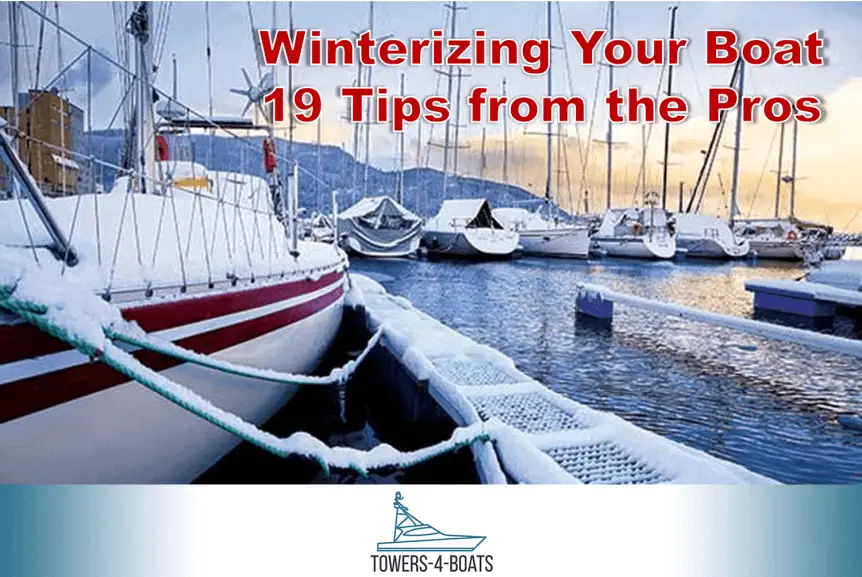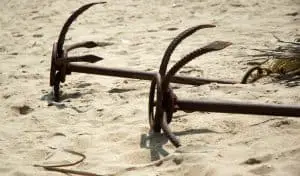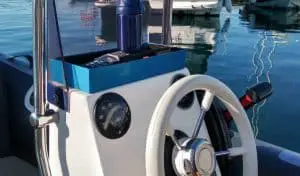Complete Guide to Prepare Your Boat for Winter
As the days get shorter and the temperatures get lower, many boat owners decide it’s time to call it quits on the summer boating season. Although we’d rather be out on the water all year round, the changes in the seasons often dictate that we spend little, if any, time on our boats during the winter months.
However, just because you’re not planning on doing a lot of boating in the winter doesn’t mean that your duties as a boat owner have come to a close. Rather, getting your boat ready to ride out the cold, wet winter season is perhaps one of the most important annual maintenance projects that a boat owner has to take on as improper storage of your vessel in the winter can lead to long term and even irreversible damage to your investment.
That being said, getting your boat ready for winter can sound like an impossible task, especially if you’re not naturally mechanically minded. Thankfully, we’re here to help. Coming up, we’ve got your ultimate guide to winterizing a boat, complete with information on how much it’ll cost you, and a step-by-step instruction manual to getting the job done. Here we go!
Why do you need to winterize a boat?
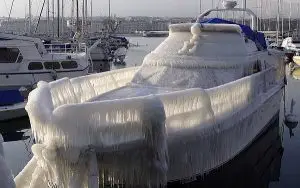 Okay, first things first: why do you need to winterize a boat? Although boats are designed to handle the harshness of the ocean and the weather when you’re underway, it so happens that letting a boat – or anything with an engine and electronics, for that matter – sit out in the elements for an extended period of time can cause a lot of damage.
Okay, first things first: why do you need to winterize a boat? Although boats are designed to handle the harshness of the ocean and the weather when you’re underway, it so happens that letting a boat – or anything with an engine and electronics, for that matter – sit out in the elements for an extended period of time can cause a lot of damage.
Of course, just because winter is coming quickly doesn’t mean you have to stop boating (you can certainly go fishing or on a cruise during the colder months), many people like to call it quits on boating at the end of the summer. Generally speaking, these folks tend to leave their boats unused for months at a time, which can wreak havoc on your vessel – and especially on the engine.
In fact, if you don’t winterize your boat, you’re setting yourself up for catastrophe down the line. One of the biggest priorities in winterizing a boat is the engine, which can be seriously damaged from moisture build-up in the fuel tank. When the air gets colder, the moisture in suspension in your boat’s fuel tends to separate out and corrode the aluminum fuel tanks and seams in your vessel.
Once the spring rolls around, carburetors and fuel injection systems often accumulate particles of aluminum oxide, thanks to this corrosion process, which results in a white sludge build-up and a lot of money for engine repairs. Eek! Plus, as fuel decomposes over time, it can form gross gummy deposits that then harden and increase the corrosion of the steel parts of your engine and fuel pumps.
Of course, your boat’s engine is just half of the story. For example, much like a car battery, a boat’s battery can and will die in cold temperatures. Since we often start-up our boat engine after being at anchor in a remote place for a few hours, the last thing we want is to have a dead battery and no way to get back to the marina. So, taking care of your boat’s battery and electronics is of the utmost importance in the winter.
Beyond the battery, electronics, and engine of your vessel, in the winter, your boat’s gel coat is exposed to harsh elements, such as the cold, wind, snow, and ice, which freeze and thaw to form large cracks in the fiberglass, blisters int the hull, and damage to thru-hull fittings. Simply put, winter can be harsh to your boat, especially if you’re not using it for months at a time. Read about preventing mold and mildew while your boat is not in use.
The best way to avoid all of this potential damage (and save yourself money in the long run) is to properly winterize your boat. If you’re new to boat ownership, this may not be something that you’re used to doing, but with some guidance and practice, you’ll be a pro in no time. Up next, we’ll walk you through the boat winterization process so you can rest assured that you’ve protected your vessel throughout the winter months.
How do I winterize my boat?
As you might expect, winterizing a boat is a process, so don’t expect to get it all done in a few minutes. When you take on the responsibility of owning a boat, you need to be ready to care for it, even when it’s not in use. Of course, you can always pay a professional to winterize your boat for you, but it’s worth understanding the process so you know what you’re paying for. It’s a bit of a lengthy process, so let’s get started!
Winterizing an engine
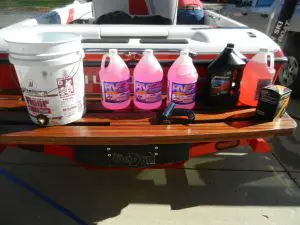 Okay, so your engine is perhaps the most valuable single component of your boat, so let’s start with getting a boat engine ready for winter. Depending on the type of engine you have (gas inboard/sterndrive, diesel, Genset, or outboard), this process will look slightly different in reality, but the concepts are much the same from engine to engine. Here’s what you need to do:
Okay, so your engine is perhaps the most valuable single component of your boat, so let’s start with getting a boat engine ready for winter. Depending on the type of engine you have (gas inboard/sterndrive, diesel, Genset, or outboard), this process will look slightly different in reality, but the concepts are much the same from engine to engine. Here’s what you need to do:
- Fill up your fuel tanks completely and add a stabilizer. As we’ve mentioned, moisture equals damage and even death to an engine, so filling up your fuel tanks can help reduce the likelihood that there’s space for moisture to condensate inside the tank and corrode any metal. A stabilizer can help keep any moisture in the fuel in its proper suspended state to better protect your engine and its metal components.
- Change the oil and filter. This is good practice for whenever your boat is going to be left in storage for a few months as moisture and acids inside a crankcase can do major damage to your engine
- Replace fuel filters. Check your fuel filter for leaks to prevent moisture from getting inside during the winter.
- Drain all water from the engine. This process is confusing to many boat owners and varies from engine to engine, though if you get it wrong, you can crack your engine block through the freeze/thaw process. Alternatively, you can use ample amounts of anti-freeze to get the job done.
- Check coolant levels. In an inboard engine, there are two cooling systems – the permanent freshwater coolant and the seawater intake. Before you put your boat away for the winter, check to ensure that the permanent freshwater coolant system is clean and up-to-snuff. You’ll also want to close the intake seacock for the seawater intake cooling system, especially if you’re storing your boat in the water. You can also put anti-freeze in the seawater cooling system to keep things happy during the winter.
- Fog cylinders in gasoline engines. This process helps prevent moisture build-up within the engine cylinders themselves.
- Put your battery on a marine charger. No one likes a dead boat battery, so protect your battery before you put your vessel to bed for the winter.
Winterizing your boat below decks
After you get your engine ready for the winter, it’s time to take care of everything else below decks. Your vessel’s plumbing is particularly susceptible to damage, so you’ll want to pay particular attention to this during the winterization process. Here’s what you need to do:
- Pump all the water out of the holding tanks. Water expands when frozen, which can crack your pipes. It’s also worth adding some anti-freeze to the head.
- Drain your water heater. Same concept – water expands when it freezes, so protect your water heater by draining it first.
- Run anti-freeze through the plumbing and pumps. Check out your boat’s owner’s manual for more specific information as to what you should do.
- Drain pooled up water. Your shower sump is particularly vulnerable here, so just make sure you drain out any water that tends to collect in certain spots on your boat.
- Remove food. No one likes to start the boating season off by finding a five month old slice of pizza in the fridge. Old food attracts pests, so dispose of it before winterizing your boat.
- Air out your lockers. While you’re winterizing your boat, open the lockers up to air them out. This will help prevent mold and mildew growth over time. If you notice a lot of wet equipment in the lockers, dry it out before you close up shop for the winter.
- Store cushions properly. Fabrics and textiles wear out quickly when left outside, so either store them in your boat’s cabin or bring them home for the winter.
- Remove portable electronics. If there’s any electronic equipment on your boat that you can remove, take it home for the winter. This reduces the possibility of theft or unnecessary damage.
- Turn off propane. Properly switch off any propane tanks before the winter. If you have an external tank control above decks, switch this off first, then open the control in the galley. Turn on the stove and burn off any fuel that’s left in the pipes to eliminate the chance of a gas leak during the winter. You should also take smaller propane tanks home with you whenever possible.
- Dry the bilge. Clean out your bilges and make sure they’re as dry as possible.
- Secure hatches. You don’t want to come back to your boat in the spring and find that you accidentally left a hatch open. Double and triple check to make sure you’ve battened down the hatches for the winter.
- Turn off your circuit breakers. Make sure everything is off with the exception of the bilge pump and any smoke or vapor (carbon monoxide) alarms.
- Cover your boat. Either get yourself a high-quality boat cover or pay someone to shrink wrap your boat (if you’re putting it in storage), or you’ll risk damaging your vessel’s gel coat and fiberglass.
If leaving your boat in the water
If you choose to leave your boat in the water for the winter (more on that later), you’ll have a few more tasks to do before you’re done. Here’s what you need to do:
- Close up all seacocks. This prevents water from building up inside your boat. The only exception to this is that you should keep all cockpit drains open.
- Plug up your exhaust ports. No need to leave your exhaust vulnerable to water intake.
- Tie up your boat properly. Put out all the fenders you have and consider adding more if your slip is particularly narrow. Check all of your mooring lines and ensure they’re done up properly. Center your boat in your slip to the best of your abilities.
- Tie off the tiller or steering wheel. Unnecessary movement of your tiller or steering wheel can damage the vessel’s rudder.
- Lock your cabin. Even if your marina is super secure, you’ll want to lock your cabin up and leave a spare set of keys with the marina manager, just in case.
How much does it cost to winterize a boat?
If all of that winterizing sounds like a lot of work to you, well, that’s because it is. Winterizing your boat is a process that can be time-consuming, but it often gets easier as you become more familiar with the procedures and your vessel’s specific needs. Thankfully, however, winterizing a boat really doesn’t cost all that much to do, especially when you consider the potential repair costs that you’ll need to cover if you don’t winterize your vessel.
So, how much does it cost to winterize a boat? Let’s find out:
Do It Yourself Winterization
Although there are quite a few things you need to do to winterize a boat, they’re not particularly challenging, so many boat owners choose to do it themselves. In fact, winterizing your boat can take an hour or less of your time, so if you exclude the minimal labor hours, your only real expense is for your winterizing supplies. This is what you’ll need:
- Fuel treatment: $5 – $10
- Engine fogging solution: $5 – $15
- Oil change supplies: $30-$75
- Antifreeze: $5 – $15
As you can see, the supplies you’ll need are fairly minimal. Of course, this doesn’t include the cost of a boat cover, marina fees, or other storage fees, but the actual supplies you need to winterize are quite small.
Professional Winterization
If you don’t have the time to winterize your boat or just don’t want to deal with the hassle, you can certainly pay for a professional to do it for you. As you might imagine, the fees for this service vary from place to place and from boat to boat, but you can expect to pay around $150 for a small boat and upwards of $500 for a larger vessel.
The cost of NOT winterizing your boat
Should you fail to heed our warnings and choose not to winterize your vessel for whatever reason, you may get lucky and come back to your boat in the spring to find it in perfect working condition. Alternatively, you can find that your short-term savings of about $150-$300 for not winterizing your boat have led to a huge repair project with a sizeable bill to go with it. Just how much will these repairs cost? Let’s take a look:
- Clogged carburetors and fuel injectors: $250 – $1,200 to repair
- Corroded engine cylinders, pistons, and rings: $2,500 to $15,000+ to repair
- Cracked engine blocks: $5,000 to $20,000 to repair
- Failure to change the oil: $500 to $20,000 to repair
- Gear-case seal failure: $2,000 to $6,000 to repair.
So, if you’re following along, you can see that winterizing your boat, while a small upfront cost, can save you A LOT of money in the long term. That’s enough to persuade us…
Can my boat stay in the water during the winter?
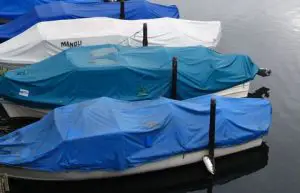 If you rent a slip in a marina, you might be wondering if your boat can stay in the water during the winter months. Since you’re already paying the marina fees and – let’s be honest – hauling a boat out of the water can be pretty darn annoying, it might seem like the best possible choice for your situation.
If you rent a slip in a marina, you might be wondering if your boat can stay in the water during the winter months. Since you’re already paying the marina fees and – let’s be honest – hauling a boat out of the water can be pretty darn annoying, it might seem like the best possible choice for your situation.
But, can your boat stay in the water throughout the cold season? Well, it turns out that you certainly can leave your vessel in the water all year long, but that you’ll need to be willing to put in a little extra effort when it comes to maintenance and storage. Especially if you own a larger boat, the hefty fees associated with hauling your vessel out the water might be sizeable enough for you to leave your boat at the docks.
That being said, whether you have a trailer-able boat or a yacht, you’ll need to be ready to take on some additional winterization challenges. Since a boat in the water is much more exposed to the elements than a boat in a storage facility or even just under a cover in your driveway, in-water winter storage is tricky. In particular, you’ll have to work hard to:
- Prevent ice from forming around your boat, if you live in a particularly frosty area
- Minimize corrosion
- Keep your boat’s freshwater system drained at all times
- Maintain a full charge in your batteries
- Protecting your boat from storms
However, if you’re willing to make regular visits to the marina to check on your boat, or know someone who can do it for you, storing your boat in the water during the winter is very possible. Here are some things you can do to help protect your boat when it’s in the water during the winter:
- Talk to the marina manager about their anti-ice strategies. If you live somewhere where you’re likely to get ice build-up at the docks, you’ll want to have a chat with the marina manager to see what they do to protect boats in the wintertime. Many places in cold climates will have some sort of “ice-eater” pumps that help keep water circulating around the boats while they’re in their slips. Moving water is less likely to freeze, so these systems can protect your vessel’s hull from damage from the ice.
- Secure your boat properly. Winter is not the time for lazy mooring lines. Make sure your boat is properly secured to the dock and that all lines are running over the protective metal plates on your boat’s fiberglass to protect it from excess wear. Be sure to check that your mooring lines are secure whenever you visit your boat.
- Drain all the freshwater from your boat. This water will almost certainly freeze if your boat is left out in the winter, which will result in some serious damage. So, drain it out before the cold weather sets in.
- Charge your batteries. Make sure your boat’s batteries are at a full charge so that your bilge pump can do its job, even when the temperatures drop.
- Cover your boat. If your boat is going to be left out in the water during the winter, you definitely need to make sure it’s covered. Fully custom covers provide the most protection for your vessel, but anything is better than nothing.
- Replace those sacrificial anodes now. Especially if you store your boat in saltwater, sacrificial anodes can help protect the rest of your boat from corrosion. If you’re going to leave your boat in the water all winter, do yourself a favor and replace those anodes now.
- Follow all of the other instructions for winterizing your boat. Everything else we’ve talked about thus far is pertinent to winterizing your boat, even if you plan on leaving it in the water. In fact, leaving a boat in the water means you’ll want to be extra careful and meticulous when prepping it for the winter.
In Conclusion
Ultimately, winterizing your boat is one of the most important annual bits of maintenance you do for your vessel. Although it might seem like a hassle, winterizing your boat can protect it from tens of thousands of dollars in costly repairs and will help keep your vessel in good working condition for years to come. Plus, winterizing your boat is relatively low-cost, and you can easily get a professional to do it for you, so there’s really no reason not to do it.
Our advice? Winterize your boat, every time.

